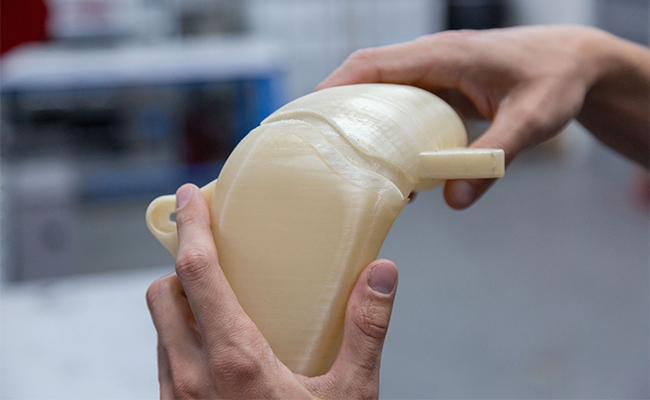Due to the material’s inherent fire resistance, Zortrax Endureal industrial 3D printer can produce elements which comply to the fire protection standards in rail traffic.
As part of its partnership with material producer BASF Forward AM, Zortrax qualifies a flame-retardant filament for its Endureal 3D printer. The announcement follows the recent launch of new metal options for this 3D printer.
Named BASF Ultrafuse® PPSU, the new material belongs to the group of polysulfones, which are high-performance engineering thermoplastics known for very good performance in extreme thermal conditions.
Industrial components made with Ultrafuse® PPSU retain their properties and geometry when exposed to high temperatures and steam — up to 220 °C for a short contact time, and up to 180 °C for longer periods. For this reason, 3D printed parts can withstand repeated cycles in an autoclave.
At the manufacturing level, BASF ensured that the material’s dimensional accuracy leads to minimum reprint or redesign of parts in case of printing issues.
Other properties of BASF Ultrafuse® PPSU include resistance to oils in temperatures reaching 170 °C, as well as resistance to fluorine, coolants, lubricants, and fuels. Thanks to that, 3D printed end-use gauges, valves, tubing, or pump housings can be applied in the hydraulic and mechanical industries.
Compliance with UL 94 flammability standard and other certifications
BASF Ultrafuse® PPSU’s properties have been confirmed by the UL 94 flammability standard. During the fire tests, where an open flame is applied to vertically oriented samples with different thicknesses, BASF Ultrafuse® PPSU has gained the V-0 rating. It means that the burning stopped within 10 seconds on samples with both 1.5 mm and 3.0 mm thickness. Compliance with this standard is highly required for the materials used in space exploration, where it is paramount to prevent any emergency scenarios.
The filament has passed the certification process in which it was tested in terms of its ability to ignite and spread flame. As a result, Ultrafuse® PPSU complies with the EN 45545-2 railway classification and has been approved for use during the manufacture of rail vehicles operating both on the surface and underground, such as high-speed trains, streetcars, or subways. Therefore, nearly every element of a train’s equipment, as well as its exterior or components protecting electrotechnical devices can be 3D printed with Ultrafuse® PPSU on the Endureal and placed in passenger railcars as end-use items. With the material’s fire protection standard, such components minimize the risk of spreading fire in case of an accident, protecting the people travelling or working on board the vehicle, Zortrax says.
Applications may therefore include elements of seats like grab handles, overhead components, window frames, covers or air ducts.
Remember, you can post job opportunities in the AM Industry on 3D ADEPT Media free of charge or look for a job via our job board. Make sure to follow us on our social networks and subscribe to our weekly newsletter : Facebook, Twitter, LinkedIn & Instagram ! If you want to be featured in the next issue of our digital magazine or if you hear a story that needs to be heard, make sure to send it to contact@3dadept.com






